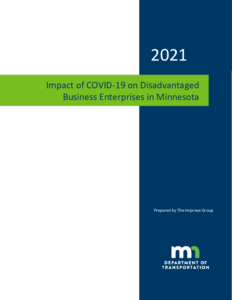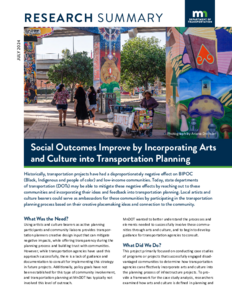Displaying results 1 - 4 of 4
Impact of COVID-19 on Disadvantaged Business Enterprises in Minnesota
Creator
Date Created
2021-08
Report Number
2023-07
Description
Utilizing Arts and Culture to Mitigate the Negative Impacts of Transportation Infrastructure on Communities
Date Created
2024-06
Report Number
2024-12
Description




